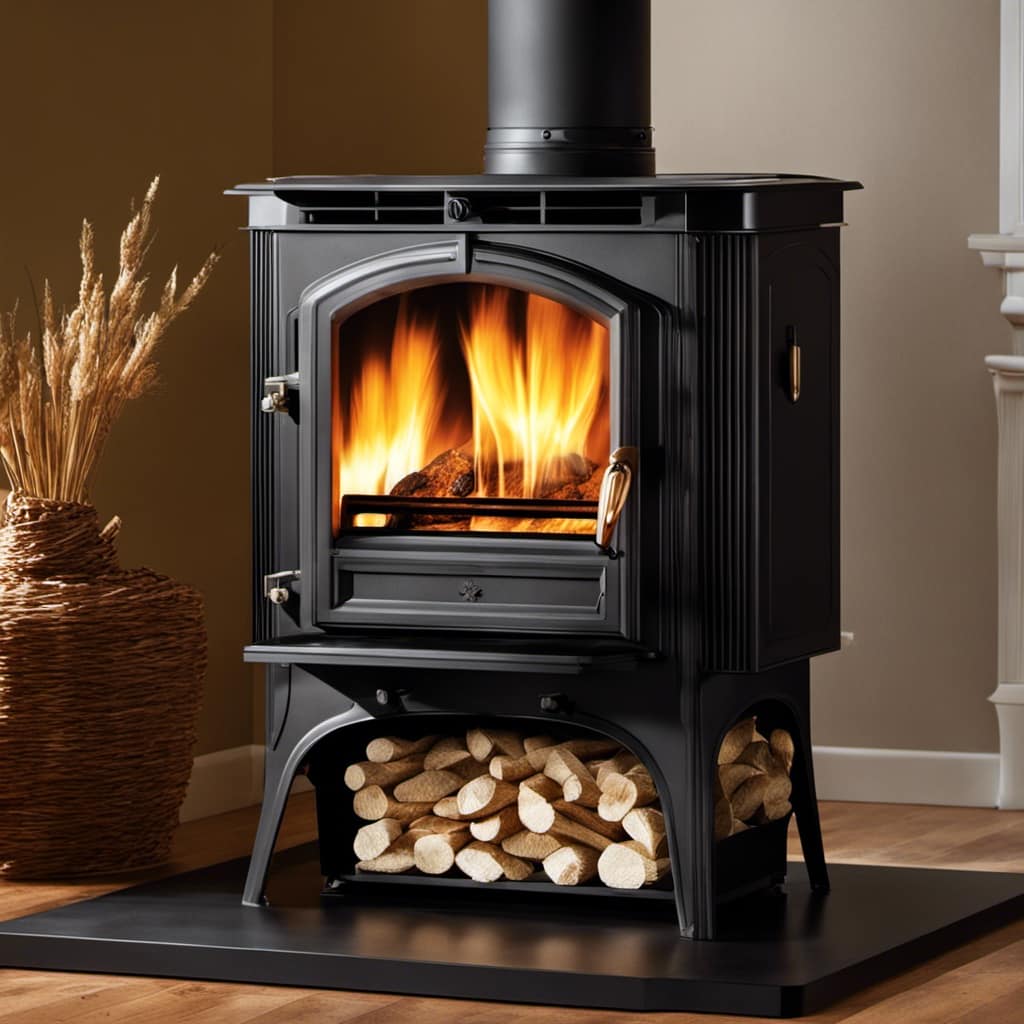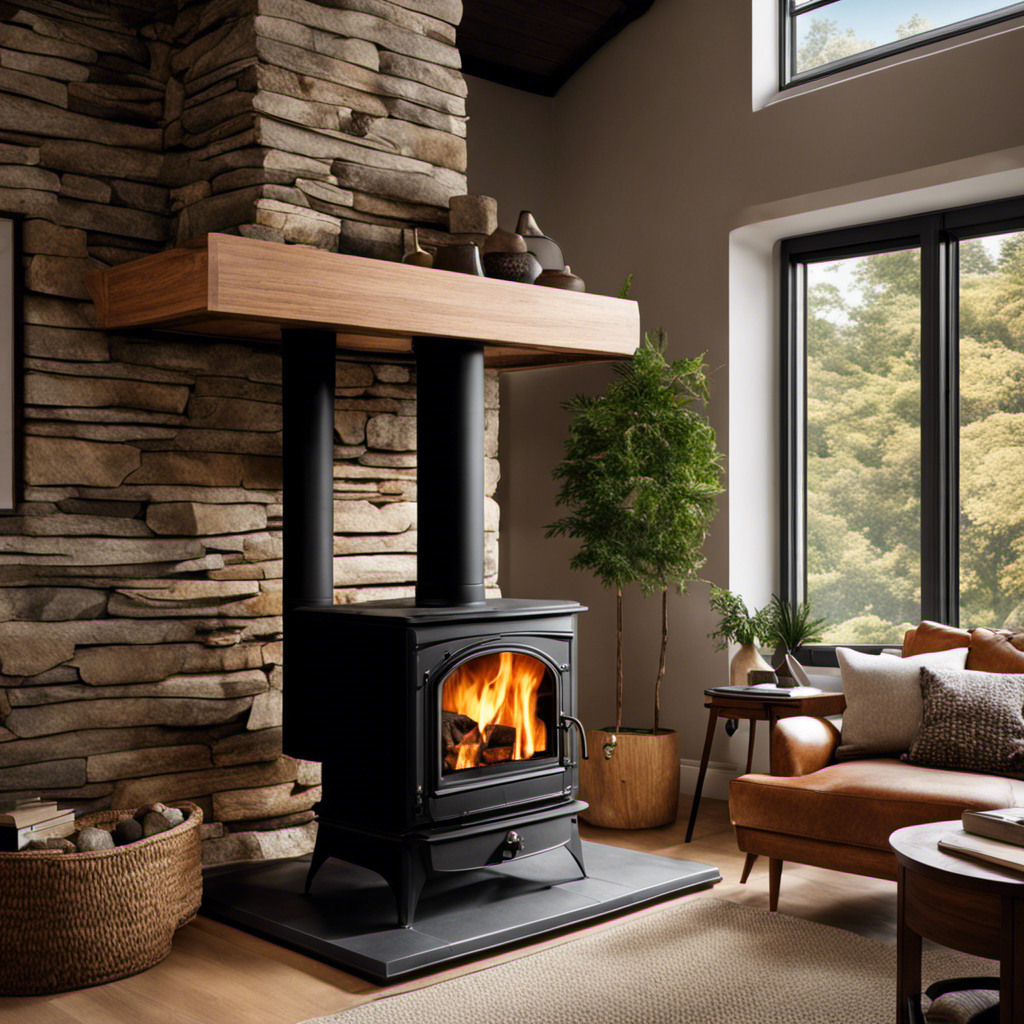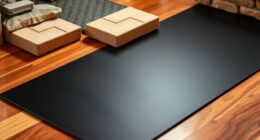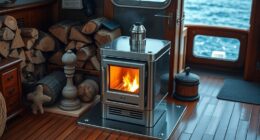As a seasoned enthusiast of wood stoves, I have discovered the secret to unlocking the fiery potential of my beloved appliance.
In this article, I’ll share my tried and true methods for getting a wood stove to burn hotter.
From understanding airflow dynamics to selecting the perfect firewood, I’ll guide you through the steps to achieve maximum heat output.
So gather ’round, fellow stove aficionados, and let’s ignite a roaring blaze that will keep us warm through the coldest of nights.
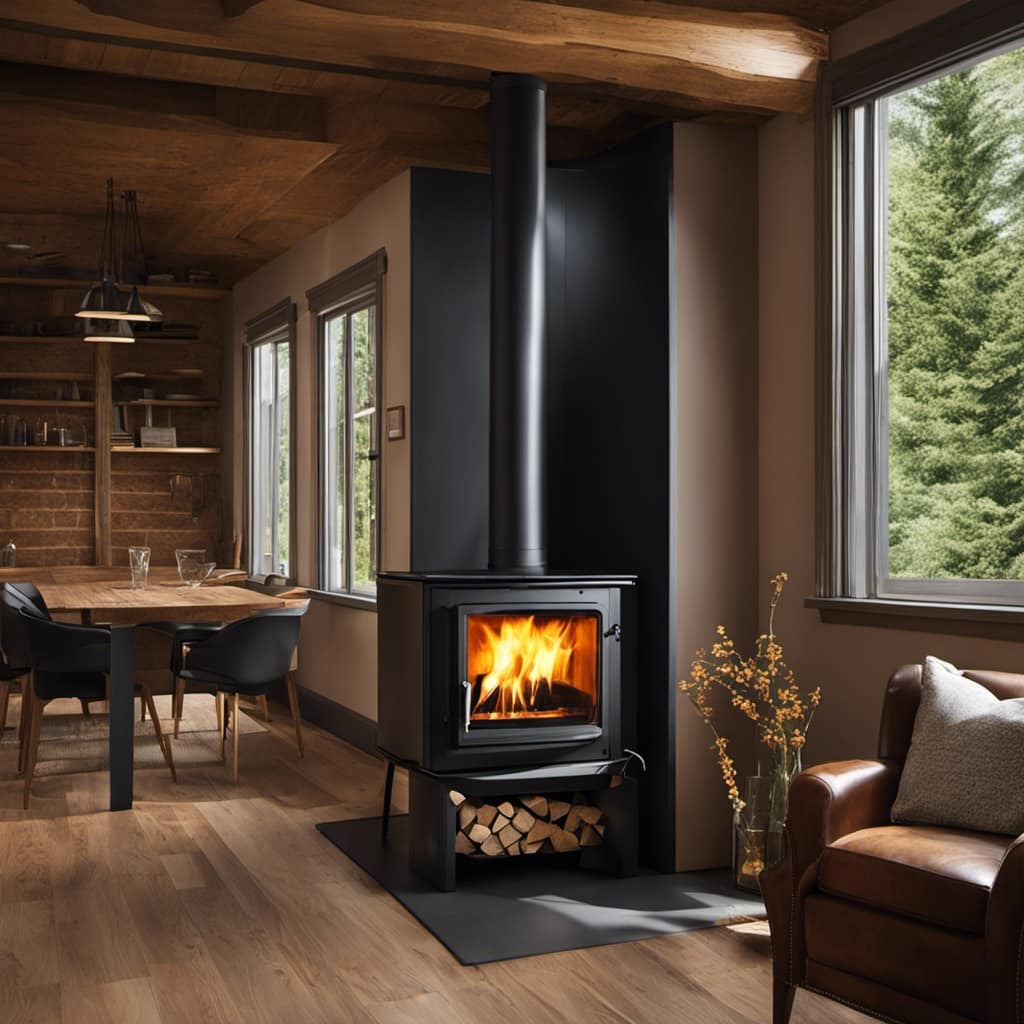
Key Takeaways
- Adjusting the air intake by opening the damper fully allows for maximum airflow and a strong draft.
- Splitting firewood into smaller pieces improves airflow and combustion efficiency.
- Properly arranging logs ensures optimal airflow and promotes a more efficient burn.
- Regular maintenance, including cleaning the stovepipe and checking air vents, is necessary for better performance.
Understanding Airflow: Optimizing Your Wood Stove’s Air Intake
I find that adjusting the air intake on my wood stove is key to getting it to burn hotter. Improving combustion and maximizing heat output requires understanding the principles of airflow. The air intake, controlled by the damper, regulates the amount of oxygen entering the firebox. By adjusting the damper, you can increase or decrease the flow of air, which directly affects the burn rate and temperature of your wood stove.
To achieve a hotter burn, start by fully opening the damper to allow for maximum airflow. This will create a strong draft, providing the fire with ample oxygen to burn more efficiently. As the fire builds, you can gradually reduce the airflow by partially closing the damper. This adjustment will slow down the burn rate, allowing for a longer-lasting fire and increased heat production.
By understanding and effectively adjusting the air intake, you can optimize your wood stove’s performance and achieve a hotter burn.
Now let’s explore the next step in maximizing heat output: choosing the right firewood.

Choosing the Right Firewood: Fueling Your Fire for Maximum Heat
To achieve maximum heat in my wood stove, I need to select the right firewood. The type of wood I choose can greatly impact the efficiency and heat output of my stove. Here are some key factors to consider when selecting firewood:
Splitting wood: It’s important to split the wood into smaller pieces to ensure better airflow and faster burning. This allows for a more efficient combustion process and greater heat production.
Seasoning firewood: Seasoning refers to the process of drying the wood to reduce its moisture content. Well-seasoned firewood burns hotter and produces less smoke. It’s recommended to season firewood for at least six months before using it in a wood stove.
Hardwood vs. softwood: Hardwoods such as oak, maple, and ash are denser and have a higher heat value compared to softwoods like pine and spruce. Using hardwoods can result in a longer burn time and higher heat output.

Proper storage: Storing firewood in a dry and well-ventilated area is essential to maintain its seasoning. It’s best to stack the wood off the ground and cover it with a tarp to protect it from moisture.
Arranging the Logs: Building a Well-Structured Fire for Hotter Burns
Arranging the logs in a well-structured manner ensures optimal airflow and promotes a more efficient and hotter burn in the wood stove. Proper ventilation is key to achieving maximum heat output.
When arranging your firewood, it’s important to create a solid base by placing larger logs at the bottom. This helps to establish a sturdy foundation and allows for better control of the fire.
As you stack the logs, make sure to leave enough space between them to allow air to circulate. This will help in controlling the draft and ensuring a steady supply of oxygen, which is essential for a hotter burn.

Additionally, consider using smaller logs or kindling to create a top layer. This will ignite more easily and provide a quick and intense burst of heat.
Maintaining Your Wood Stove: Cleaning and Troubleshooting for Better Performance
Maintaining my wood stove is essential for optimal performance, and this includes regular cleaning and troubleshooting to ensure it operates efficiently. Here are some cleaning methods and troubleshooting tips that I’ve learned over the years:
Cleaning Methods:
- Remove ashes regularly using a metal scoop or shovel.
- Clean the stovepipe at least once a year to remove creosote buildup.
- Wipe down the exterior of the stove with a damp cloth to remove any dust or soot.
- Use a stove glass cleaner to keep the glass door clean and transparent.
Troubleshooting Tips:
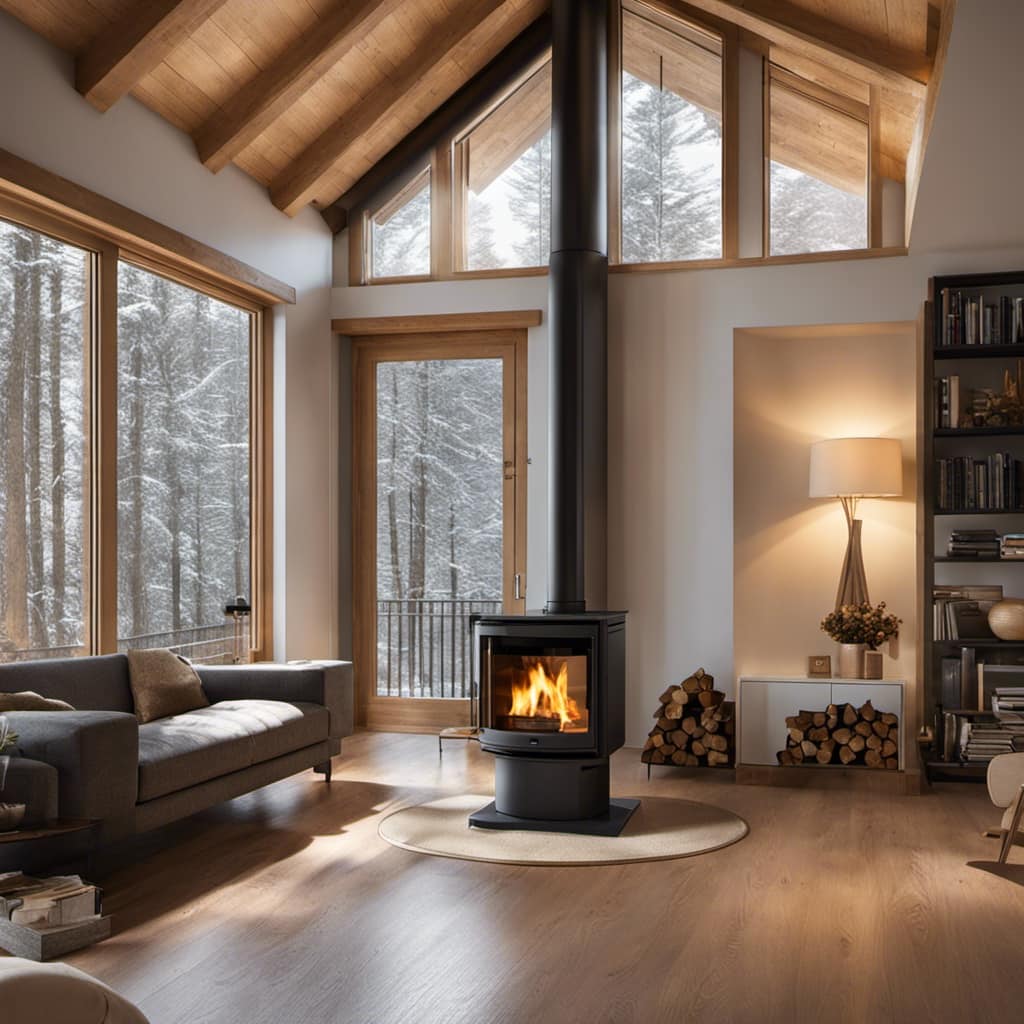
- Check the air vents to ensure they’re open and not blocked.
- Make sure the wood is dry and properly seasoned.
- Clean or replace the gaskets if they’re damaged.
- Have a professional inspect and clean the chimney annually.
By following these cleaning methods and troubleshooting tips, you can keep your wood stove running efficiently and safely.
Now, let’s move on to enhancing insulation: keeping the heat in and the cold out.
Is Increasing the Temperature of a Wood Stove the Key to Getting It to Burn Hotter?
When using a wood stove, following a wood stove temperature guide is crucial for achieving the desired heat output. Increasing the temperature of a wood stove can indeed help it to burn hotter, but it’s important to do so carefully to avoid overfiring and potential damage to the stove.
Enhancing Insulation: Keeping the Heat in and the Cold Out
I’ve found that adding weatherstripping to doors and windows is an effective way to enhance insulation and keep the heat in while keeping the cold out.
Improving the efficiency of your home’s insulation is crucial for maintaining a comfortable indoor temperature and reducing energy consumption. Sealing gaps around doors and windows is a simple yet effective solution to prevent drafts and heat loss.

Weatherstripping materials such as adhesive foam strips or rubber gaskets can be easily installed to seal any gaps or cracks. These materials provide a barrier against air leakage, preventing cold air from entering and warm air from escaping.
Frequently Asked Questions
Can I Burn Any Type of Wood in My Wood Stove to Make It Burn Hotter?
I can burn any type of wood in my wood stove to make it burn hotter, but I find that burning hardwood and using seasoned wood is the most effective way to increase the heat output.
How Often Should I Clean My Wood Stove for Optimal Performance?
I clean my wood stove every few weeks for maximum efficiency. Different types of fuel can be used to optimize performance. It’s important to maintain a regular cleaning schedule to ensure the stove operates at its best.
Can I Use Fire Starters or Accelerants to Make My Wood Stove Burn Hotter?
Yes, fire starters can be used to make a wood stove burn hotter. However, it’s important to note that using accelerants frequently can lead to a buildup of creosote, requiring more frequent wood stove maintenance.
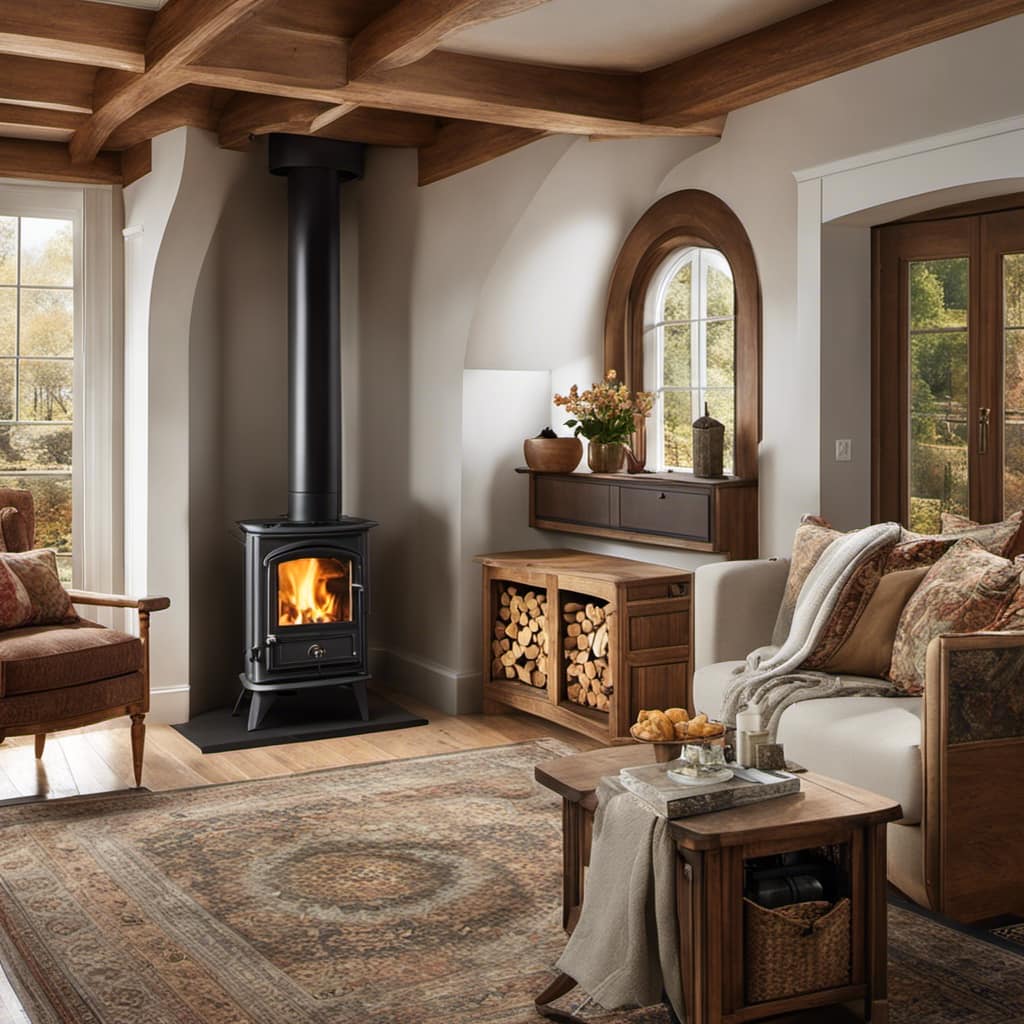
What Are Some Common Troubleshooting Issues That Can Affect the Heat Output of My Wood Stove?
Common maintenance and troubleshooting techniques are crucial to ensure optimal heat output from a wood stove. From cleaning the chimney to adjusting the damper, these tasks help maximize efficiency and keep the fire burning hot.
Is It Possible to Over-Insulate My Wood Stove and Make It Burn Too Hot?
Yes, it is possible to over-insulate a wood stove and cause it to burn too hot. Overheating concerns can arise if insulation techniques are not properly balanced to allow for appropriate heat dissipation.
Conclusion
In conclusion, by understanding the importance of airflow, choosing the right firewood, arranging logs strategically, and maintaining your wood stove regularly, you can significantly increase its heat output.
Remember, a well-insulated stove can keep you toasty warm even on the coldest nights.
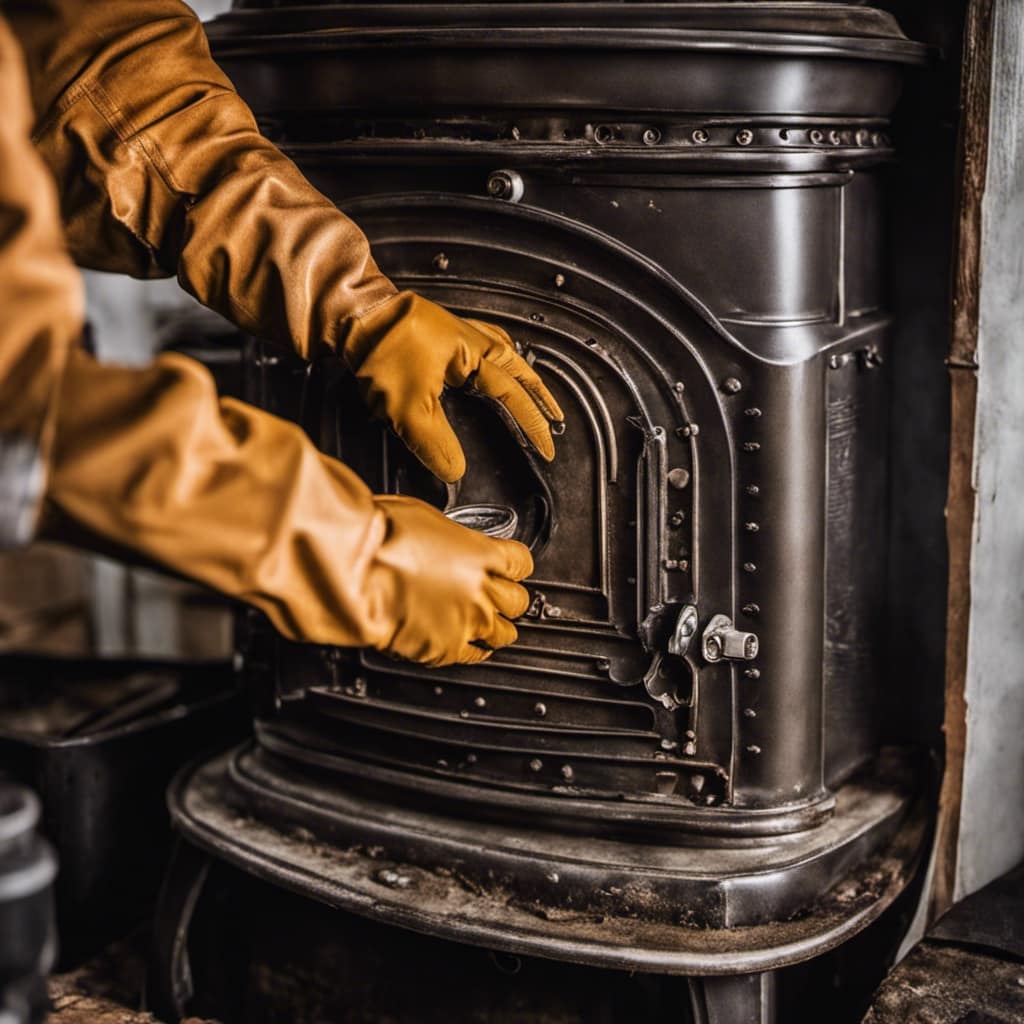
So, go ahead and unleash the fiery power of your wood stove – it’ll have you feeling like you’re basking in the scorching rays of a thousand suns!
Growing up surrounded by the vast beauty of nature, Sierra was always drawn to the call of the wild. While others sought the comfort of the familiar, she ventured out, embracing the unpredictable and finding stories in the heartbeat of nature.
At the epicenter of every remarkable venture lies a dynamic team—a fusion of diverse talents, visions, and passions. The essence of Best Small Wood Stoves is crafted and refined by such a trio: Sierra, Logan, and Terra. Their collective expertise has transformed the platform into a leading authority on small wood stoves, radiating warmth and knowledge in equal measure.





